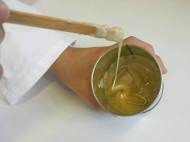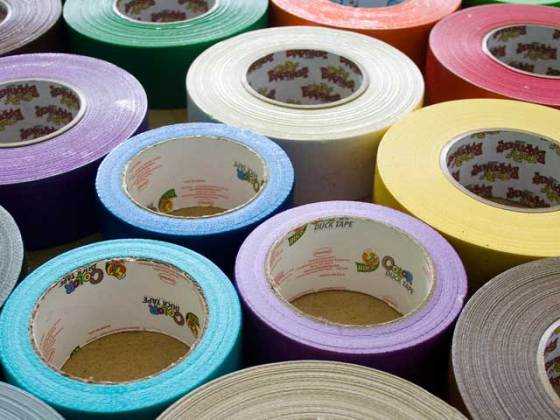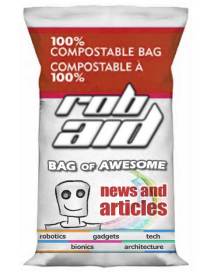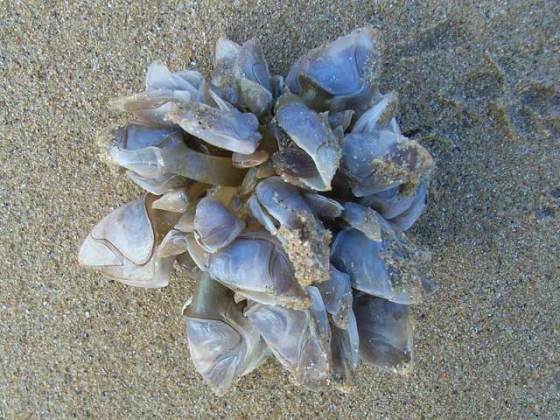Natural adhesives and adhesives inspired by nature
 Glue finds its uses in many objects ranging from sticky notes to airplanes. It is all around us, even in objects we don’t expect it to be. Until now, the majority of glues (adhesives) have been manufactured from petroleum-based materials, but the researchers from Fraunhofer Institute are looking for ways to improve them by developing new adhesives made from renewable raw materials and a potential bioinspired adhesive.
Glue finds its uses in many objects ranging from sticky notes to airplanes. It is all around us, even in objects we don’t expect it to be. Until now, the majority of glues (adhesives) have been manufactured from petroleum-based materials, but the researchers from Fraunhofer Institute are looking for ways to improve them by developing new adhesives made from renewable raw materials and a potential bioinspired adhesive.
As you might have known, the majority of modern adhesives are made from petroleum-based materials. However, the industry is gradually moving to production of adhesives made from renewable raw materials such as starch, cellulose, dextrins, and proteins. The researchers from the Fraunhofer Institute for Environmental, Safety and Energy Technology (Fraunhofer UMSICHT) in Oberhausen decided to focus on development of two new adhesive by relying on renewable raw materials.
Pressure-sensitive adhesive based on polylactic acid
Since pressure-sensitive adhesives find their use in bandages, sticky notes, and adhesive tapes, they stick at relatively low applied force. Although they have to adhere to almost all surfaces while keeping their adhesive properties at varying room temperatures, they also must be removable without leaving noticeable marks or residue. To achieve this, the developers of the adhesive design it to precisely match the respective use.
Pressure-sensitive adhesives are based on backbone polymers, which give the adhesives their inner strength (cohesion). Fraunhofer UMSICHT researchers decided to develop a backbone polymer from the raw material polylactic acid – a biological material which can be used from the industrial scale production of lactic acid.
“However, the properties of polylactic acid are completely different from those of the polymers used to date, such as polyacrylates and styrene-based block copolymers”, explains Dr. Stephan Kabasci, who heads the Fraunhofer UMSICHT renewable resources business unit.
According to researchers, the low cost of the material makes it match the prices of fossil-based backbone polymers. Hence, it will be competitive to offer its different properties in new (or improved) applications of pressure-sensitive adhesives.
Fraunhofer UMSICHT researchers are developing this new pressure-sensitive adhesive for industrial applications in cooperation with their colleagues from the Recklinghausen site of the Westfälische Hochschule, University of Applied Sciences. Companies Jowat, Logo tape, and Novamelt have also shown interest in this project which is supported by the Germany’s Federal Ministry of Food, Agriculture and Consumer Protection.
Compostable water-based dispersion adhesives
Fraunhofer UMSICHT researchers are focused on development of a new kind of water-based dispersion adhesives. Water-based dispersion adhesives contain water soluble additives that act as links between the solid adhesive particles and the aqueous phase. When the adhesive is being applied to a surface you wish to stick to another surface, it dries and the additives evaporate or become absorbed by the adhesive – thus allowing the adhesive particles to stick. That’s how adhesives in tubes work (and why you have to close the package after each use).
Since it came up to my mind that some of the readers might be wondering why would you make these liquid adhesives compostable, I prepared an answer for them. These adhesives are found in many types of packaging, where they bond the laminating films used to protect the goods from dirt, moisture, and chemicals. This involves covering printed packaging and printed labels on one or both sides with a transparent, shiny, matt, or embossed plastic film.
Since there is an increasing number of compostable and biodegradable packaging, the next logical step is to develop adhesives suitable to match the quality requirements of adhesives used on laminated products that are compostable as well.
The Fraunhofer UMSICHT researchers are cooperating with the companies Achilles Papierveredelung Bielefeld, Jowat, and Deckert Management Consultants, to develop these new compostable water-based dispersion adhesives.
Bioinspiration as a potential solution in medicine
Nature often shows us another path to develop technologies, and we covered various examples of these solutions in our articles about biomimicry. Researchers at the Fraunhofer Institute for Manufacturing Technology and Advanced Materials (Fraunhofer IFAM) in Bremen are investigating the buoy barnacle (Dosima fascicularis) to develop a new kind of bioinspired glue.
An adult buoy barnacle lives attached to a float made either of natural flotsam or of a material it secretes itself. This ability to create its own gas-filled float makes it the only know barnacle able to produce this material which has a texture like that of expanded polystyrene foam. Another special property it has is its ability to self-heal under water.
In order to stick to its buoy, D. fascicularis produces a special adhesive which allows it to attach itself tightly to flotsam. This adhesive is so strong that it doesn’t break down to its constituent parts when it is exposed to ordinary solvents. The researchers from Fraunhofer IFAM are now trying to find out which amino acid components construct the relevant proteins in buoy barnacle adhesive.
“Once we’ve done that, the next step will be to recreate the adhesive proteins in the laboratory”, said Dr. Ingo Grunwald, expert for biological adhesives at the Fraunhofer IFAM.
Such bioadhesives could be used in various medical applications, for example to close incisions or to replace or support the pins and screws used to treat bone fractures.












Interested for Indian market